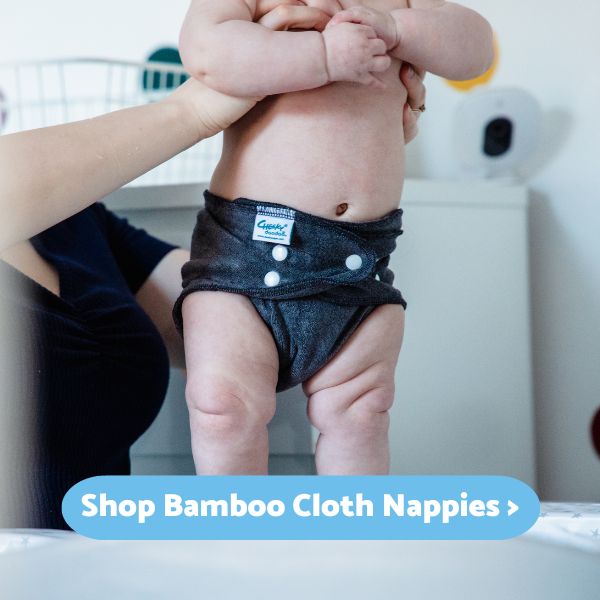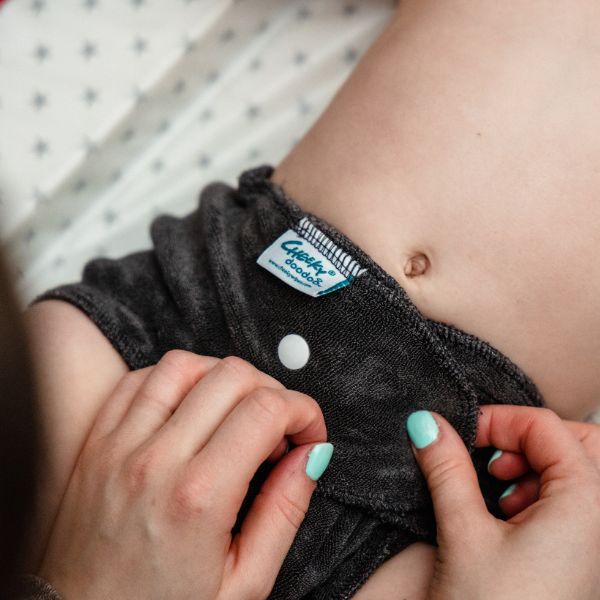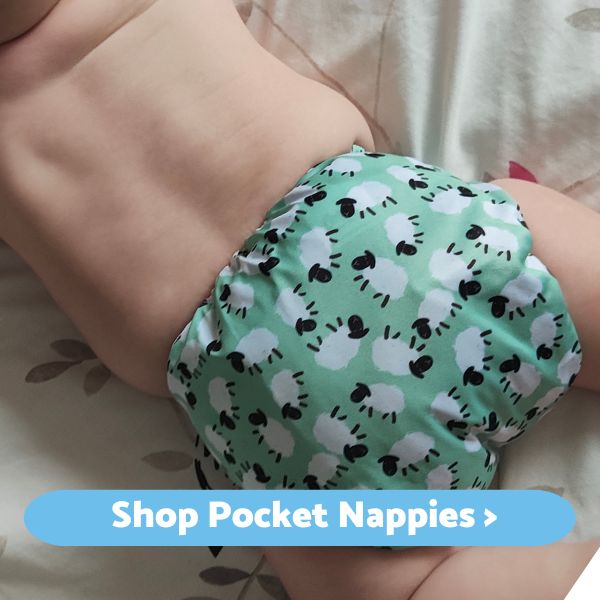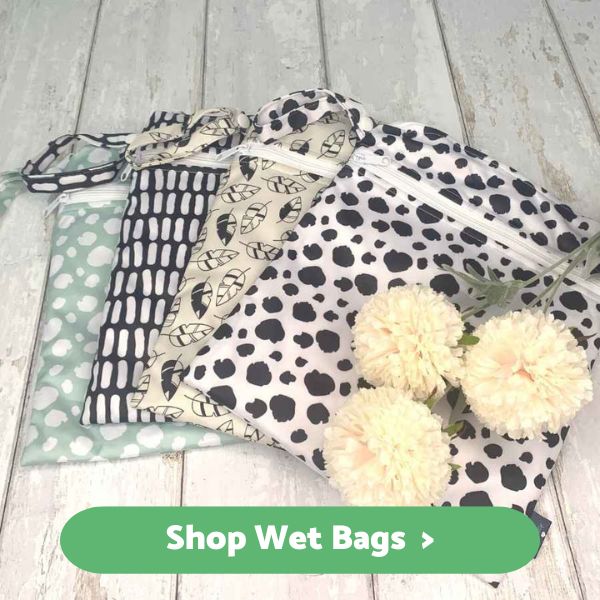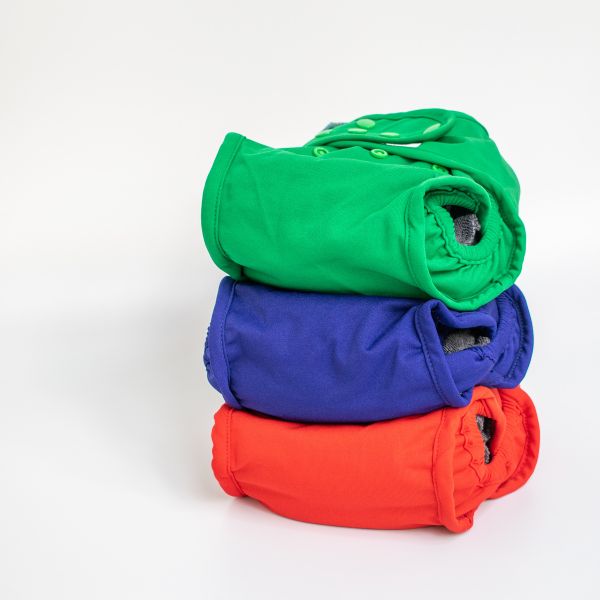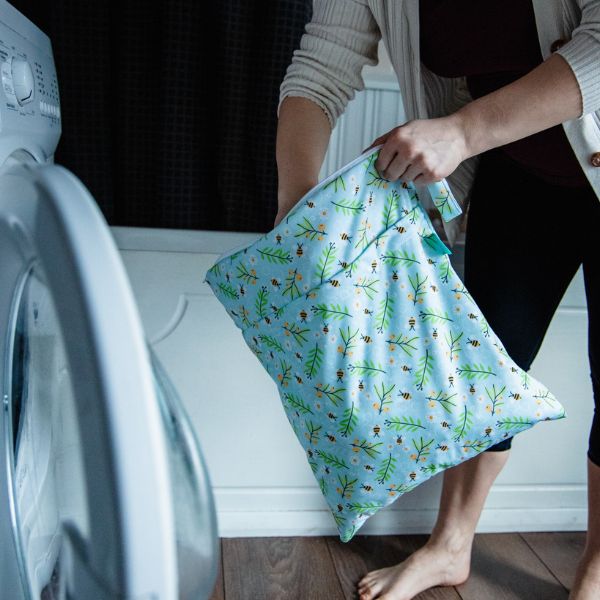How to Stop Reusable Nappies Leaking
Nappy leaks happen sometimes - whether you use disposables nappies, reusable nappies or a combination of both. It's commonplace to pack a spare outfit in your changing bag, to roll your eyes when diaper leaks happens and to think poonamis are inevitable. Cloth nappies are super reliable and exploding poo is almost unheard of.
Once you have your routine with washable nappies, leaks don't happen often. A one off leak shouldn't be a reason to panic but if you are consistently finding leaks in the same place, a tweak in routine may be needed. Here's how to stop reusable nappies leaking, check the:
You will know if your leak is due to poor fit if you have don't have a good seal around the thighs, gaps at the tummy are not a problem.
It can be fiddly to get a good nappy fit to start with in cloth. But with practice it gets easier.
Make sure your baby is within the weight confines of the nappy as you will get leaks if it is too big or too small.
Make sure the nappy isn't escaping the nappy wrap or moisture will wick through onto babies clothes.
To correctly fit washable diapers the cotton or bamboo nappy should be placed low underneath baby - think builders bum, pinch and lift the bulk of the nappy up between babies legs and into the knicker line, pull the wing up toward the armpit of the other side, and popper up hip snaps then waist snaps. You can follow our step buy step fit guide here.
Measurements that affect fit -
- Rise - sets the height of one size fits most reusable cotton nappy covers and nappies on babies body and determines the leg round
- Hip snaps - secures the nappy around the hip, stops wing droop and secures the leg round
- Leg round - needs to be snug to prevent leaks, double gussets really help to contain everything within the nappy
- Waist - doesn't need to be super tight, leave space (two fingers) for babies beautiful belly!
Liners - make sure fleece liners are contained and not poking out anywhere, disposable liners can reduce the rate of absorption of liquid newborn poop, make sure liners are inside the double gusset not outside it - these channels are poo catchers!
"Package posted efficiently. Ordered some new night nappies to trial and so far, they have been brilliant!" Rebecca Oct '22 trustpilot
2. Absorbency
You will know if your reusable nappy leak is due to absorbency if the absorbent parts of the nappy are completely saturated. The nappy is full and needs to be changed earlier or have more inserts.
When washable inserts are new they have smooth unplumped fibres. In modern cloth nappies layers of fabric replace the chemical gel absorbers you find in disposables. They need washing in the washing machine 3 to 4 times to increase absorbency, and you can add extra boosters for heavy wetters.
Once you have washed your nappies, match the amount of boosters to the length of time you want the nappy to last (more for overnight) be careful to not over boost or you'll get a gape at the leg round and risk compression leaks.
We've got a whole guide to nappy boosters which you may wish to read, but here's a summary:
- Microfibre - fastest absorbing lowest capacity - great for soaking up liquid quickly but a bit like a sponge so doesn't hold the fluid well
- Cotton - fast absorbing moderate capacity - absorbent but more bulky than bamboo
- Bamboo - slower absorbing high capacity - slim in comparison to absorbency level, less hardwearing fabric
- Hemp - slowest absorbing highest capacity - super slim and absorbent, but most expensive, least hardwearing
Great value, fab products! Easy to use website. Great products and really good value. I purchased their bamboo nappies using one of their Tuesday deals, amazing value and such quality products. Plus their customer service are super helpful, Love cheeky! Lauren, Oct '22 trustpilot
3. Compression
You will know if your cloth nappy leak is due to compression if the leak is sudden and all in one place.
Take care not to squash the reusable diaper with vests or clothes - if the nappy is squished tight against baby it won't have space to absorb urine, like a sponge if you squash it too much fluid will squeeze out. You can use vest extenders to increase space for the washable nappy and some parents find they need to size up on baby clothes.
4. Flooding
You will know if your washable diaper leaks are due to flooding if your inserts are soaked in one area and dry in others.
As your baby grows they will change their feeding habits and will gain mastery over their bladders. Newborns pee little and often, toddlers can hold their bladders and release in a flood. Sometimes the fabric of the nappy can't keep up and liquid will make its way to the leg elastics and onto clothes.
Changing up your inserts in a pocket nappy or boosters in other nappies for a quick absorbing insert folded in the area urine hits first - in the front for boys and underneath for girls -with a heavy absorber behind will counter this.
5. Damage
You will know if your cloth diaper leak is due to damage if you see wet patches in specific places on the outside of the nappy or wrap. If the PUL has gone you will see a separate layer like clingfilm on the inside of a wrap or a bubble.
Many things need to be avoided to keep your nappies working perfectly - Fabric softeners coat fibres, tumble drying, heated airers and radiators can melt PUL, ammonia causing balding, detergent build up!
Nappy creams - make sure they don't waterproof the inside of your nappies. Most cloth bum babies don't get nappy rash but our coconut oil is cloth safe and makes a great barrier cream
Damage to PUL is pretty much irreversible but sometimes they can be resealed by a low tumble dry.
6. Routine
You will know if your leaks are down to poor changing or washing routine if your nappies smell of ammonia or if babies skin gets sore.
Changing routine: Most cloth nappies need changing within 3-4 hours. If you are getting leaks under this time consider increasing absorbency. Night nappies need to be more absorbent so opt for a fitted nappy and wrap over a pocket or all in one. Changing babies every three or four hours in the day is hygienic and keeps them comfortable.
Washing and care routine: Having a good routine can keep your nappies working well and make your life easier. If your nappies start to smell, you may need to strip wash them, read our article 'why do my cloth nappies smell?
If you found this useful we think you would like these blog -
Guide to the best nighttime nappies for heavy wetters
What to do with old reusable nappies
Using reusable nappies - the ultimate guide
As always, if you're unsure of what you need to make the switch to our easy reusable nappies, please do drop the team a line or use the online chat function. The team all use the products themselves and just LOVE to chat pee poo and periods, all day long, nothing is TMI and we all love to overshare based on our own experiences...
About the Author: Kirstin is part of the Customer Experience team at Cheeky Wipes, which since 2008 has been selling the original reusable wipes kit. She is mum to 3 and loves the forest, the sea and the hills!
Along with the rest of our crack team, she spends most days talking about bodily functions and loves a chance to overshare. The business was recognised with a Queens Award for Enterprise in Sustainable Development in 2021, celebrating their hard work over the last 13 years.
